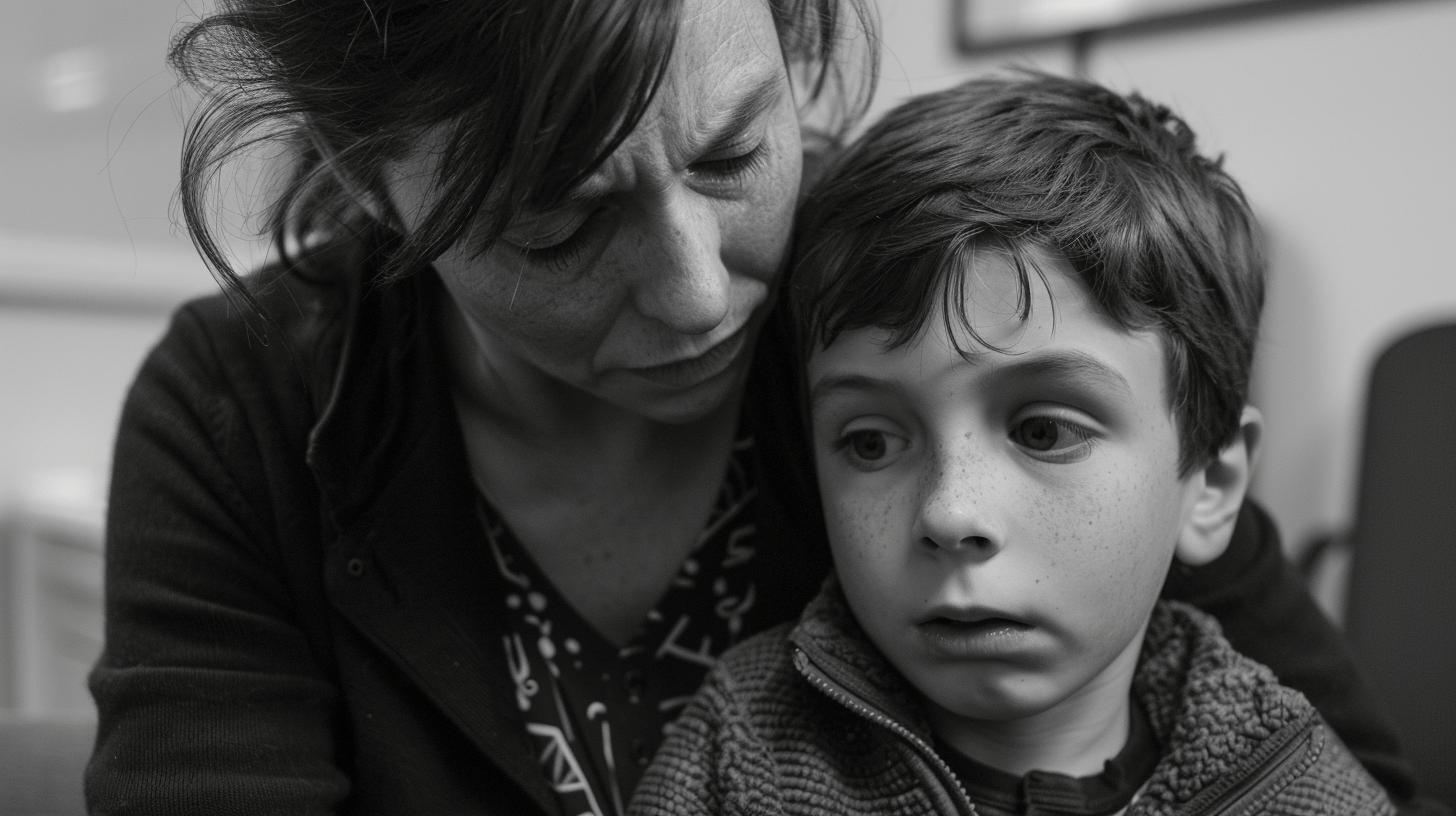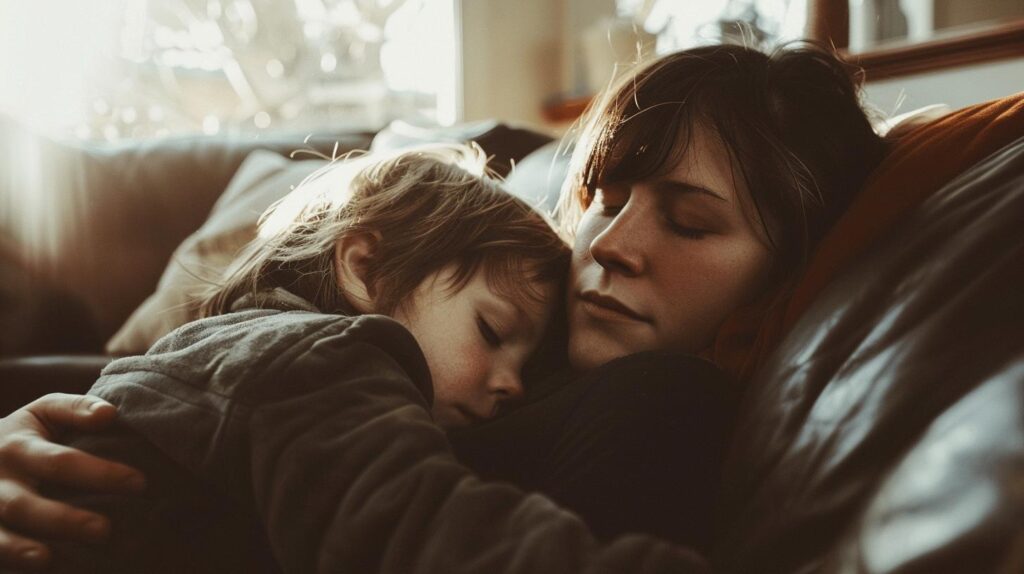Did you know that nearly 30% of children will experience clinical levels of anxiety at some point during their childhood? As alarming as this statistic is, many parents find themselves unsure of how to effectively support their anxious children. The overwhelming challenge of witnessing your child struggle with anxiety can leave you feeling helpless. But don't worry. In this article, you'll discover practical strategies for supportive parenting, designed to help alleviate your child's anxious emotions and foster a more peaceful home environment. Ready to empower your parenting journey? Let's dive in.
Understanding Supportive Parenting for Anxious Childhood Emotions
Pediatric anxiety is a significant concern, with about 30% of children experiencing clinical levels of anxiety at some point during their childhood. Studies indicate that at any given moment, between 5% and 15% of children suffer from anxiety. This high prevalence not only affects the emotional well-being of children but also impacts their social, academic, and family life.
Parents and caregivers often face numerous challenges when managing a child's anxiety. Watching a child struggle with anxiety can be overwhelming and emotionally draining. It can be difficult to know how to respond effectively, especially when traditional parenting techniques seem to exacerbate the problem. Parents may feel helpless, unsure of how to provide the necessary support while also encouraging their child to face their fears.
Here are five emotional regulation techniques that parents can use:
- Deep Breathing Exercises
- Progressive Muscle Relaxation
- Mindfulness Meditation
- Creating a Calm-Down Kit
- Encouraging Physical Activities
Supportive parenting plays a crucial role in mitigating anxiety in children. By understanding and addressing the emotional needs of their child, parents can create a nurturing environment that fosters resilience and emotional regulation. This supportive approach not only helps reduce anxiety symptoms but also strengthens the parent-child bond, promoting overall emotional health.
Effective Parenting Techniques for Managing Childhood Anxiety

Consistent routines and positive reinforcement are crucial in managing childhood anxiety. A predictable schedule provides children with a sense of security, reducing the uncertainty that often fuels anxiety. Positive reinforcement, such as praise and rewards, helps to build a child's confidence and encourages desired behaviors. By maintaining a steady routine and recognizing their child's efforts, parents can create a stable environment that mitigates anxiety.
Changing parental responses is another effective technique in reducing anxiety. SPACE (Supportive Parenting for Anxious Childhood Emotions) therapy focuses on altering parental behaviors to help children face their anxieties. For example, parents might stop staying with their child until they fall asleep or stop avoiding places their child fears. By gradually reducing these accommodations, children learn to manage their anxieties independently. This approach empowers children to develop coping mechanisms, reducing their reliance on parental intervention.
Here are six specific techniques for managing childhood anxiety:
- Not Rescuing from Anxiety-Inducing Situations
- Encouraging Gradual Exposure to Fears
- Maintaining Consistent Routines
- Using Positive Reinforcement
- Modeling Calm Behavior
- Creating a Safe Space for Open Communication
Positive reinforcement plays a significant role in managing anxiety. When parents consistently acknowledge their child's efforts and progress, it boosts the child's self-esteem and resilience. Positive reinforcement can come in many forms, including verbal praise, physical affection, or small rewards. By focusing on what the child is doing right, parents can shift the child's attention away from their fears and towards their achievements, fostering a more positive outlook and better emotional regulation.
Communication Strategies for Anxious Children
Effective communication is crucial in helping children manage anxiety. It provides emotional support, helps children process their feelings, and fosters a secure environment where they feel heard and understood. When parents communicate effectively, it can significantly reduce a child's anxiety levels, making them feel more confident and less overwhelmed.
Key strategies for effective communication include active listening, validating feelings, and providing reassurance. Active listening involves giving your full attention, acknowledging what your child is saying, and responding thoughtfully. Validating feelings means recognizing and accepting your child's emotions without judgment. Providing reassurance helps children feel safe and understood, reducing their anxiety. These strategies create a supportive atmosphere where children are more likely to express their fears and concerns.
- Practice Active Listening
- Validate Their Feelings
- Use Reassuring Language
- Encourage Open Communication
- Avoid Interrupting
Avoiding dismissive language and offering constructive solutions are also essential. Dismissive language can make children feel misunderstood and invalidated, which can exacerbate their anxiety. Instead, offer constructive solutions that empower your child to manage their anxiety. By focusing on problem-solving together, parents can help their children develop coping skills and build resilience. This approach not only reduces immediate anxiety but also equips children with tools to handle future stressors.
Creating a Supportive Home Environment

A calm and supportive home environment can significantly reduce childhood anxiety. When children feel secure in their surroundings, their stress levels decrease, and they can better manage their emotions. A supportive home fosters a sense of safety and stability, mitigating anxiety and promoting overall well-being.
Key elements of a supportive home include predictable routines, quiet spaces for relaxation, and family activities that promote bonding. Predictable routines provide a sense of structure, helping children know what to expect and reducing uncertainty. Quiet spaces allow children to retreat and unwind when feeling overwhelmed. Family activities, such as game nights or shared meals, create opportunities for connection and support.
| Element | Description |
|————————–|—————————————————————————–|
| Predictable Routines | Regular schedules that provide structure and reduce uncertainty. |
| Quiet Space for Relaxation | A designated area where children can retreat to calm down and relax. |
| Family Activities | Bonding activities, such as game nights or shared meals, that promote connection. |
| Open Communication | Encouraging children to express their feelings in a safe and supportive manner. |
Encouraging open communication and providing a safe space for children to express their feelings are essential. When children know they can talk about their anxieties without fear of judgment, they are more likely to share their concerns. A safe space for emotional expression helps children process their emotions and feel validated, reducing anxiety and building trust within the family.
Calming Techniques and Relaxation Exercises for Children
Relaxation exercises are crucial for managing anxiety in children. These exercises help children release tension, reduce stress, and improve their overall emotional well-being. By teaching kids how to calm themselves, parents can empower them to manage their anxiety independently. Incorporating relaxation techniques into a child's routine can create lasting habits that promote mental health and resilience.
Specific techniques such as deep breathing and progressive muscle relaxation are effective for calming anxiety. Deep breathing exercises involve taking slow, deep breaths to help the body relax. Progressive muscle relaxation is a technique where children tense and then slowly release different muscle groups, which helps to reduce physical tension. Guided imagery, where children visualize a peaceful scene, can also be beneficial in calming their minds. These techniques are simple to learn and can be practiced anywhere, making them accessible tools for anxiety management.
- Deep Breathing Exercises
- Progressive Muscle Relaxation
- Guided Imagery
- Yoga
- Mindfulness Meditation
- Listening to Calming Music
- Creating a Calm-Down Kit
Integrating these techniques into daily routines can promote emotional well-being. Start by setting aside specific times each day for relaxation exercises, such as before bed or after school. Encourage children to use these techniques whenever they feel anxious. Consistent practice will help children become more comfortable with these methods and more effective at managing their anxiety. By incorporating relaxation exercises into daily life, parents can help their children build a toolkit for stress management that they can rely on throughout their lives.
Professional Resources and When to Seek Help

Treatment options for childhood anxiety include cognitive-behavioral therapy (CBT), medication, and family therapy. CBT is a widely used approach that helps children identify and challenge negative thought patterns and behaviors. Medication may be prescribed in more severe cases to help manage symptoms. Family therapy involves the entire family in the treatment process, focusing on improving communication and support systems. Each of these options can provide valuable tools for managing and reducing anxiety.
SPACE (Supportive Parenting for Anxious Childhood Emotions) therapy is a parent-based treatment program designed for children and adolescents with anxiety. SPACE focuses on changing parental responses to a child's anxious behaviors. By reducing accommodations that may inadvertently reinforce anxiety, children learn to face their fears and develop coping mechanisms. The benefits of SPACE therapy include empowering parents to support their child's emotional well-being and fostering greater independence in managing anxiety.
- Persistent and severe anxiety that interferes with daily activities
- Avoidance of social situations or activities previously enjoyed
- Physical symptoms such as headaches or stomachaches without a medical cause
- Negative changes in academic performance or school attendance
- Expressions of hopelessness or excessive worry about the future
Timely intervention is crucial for managing severe anxiety. Early identification and treatment can prevent anxiety from escalating and impacting other areas of a child's life, such as academic performance and social relationships. Seeking professional help when signs of severe anxiety are present ensures that children receive the support they need to develop healthy coping strategies and improve their overall emotional well-being.
Final Words
Understanding supportive parenting for anxious childhood emotions involves recognizing the prevalence and impact of childhood anxiety. Parents face significant challenges in managing their child's anxiety, but effective techniques and emotional regulation can make a big difference.
Implementing strategies like consistent routines, positive reinforcement, and effective communication helps create a supportive home environment. Introducing calming techniques and knowing when to seek professional help are crucial steps.
Supportive parenting plays a vital role in mitigating anxiety, providing children with a secure foundation to manage their emotions effectively. Embracing these strategies fosters resilience and emotional well-being.
FAQ
What is supportive parenting for anxious childhood emotions?
Supportive parenting for anxious childhood emotions involves strategies to help children manage anxiety. Techniques include providing reassurance, establishing routines, and gradually exposing children to feared situations.
What is the 3-3-3 rule for anxiety in children?
The 3-3-3 rule for anxiety in children helps focus their attention. Ask the child to name three things they see, three sounds they hear, and move three parts of their body.
How can parents help their children when they feel anxious?
Parents can help by validating their child’s feelings, maintaining consistent routines, encouraging deep breathing exercises, and avoiding rescuing them from anxiety-inducing situations.
What is the SPACE program for parents of children with anxiety?
The SPACE program for parents focuses on reducing a child’s anxiety by changing parental behaviors. It trains parents to gradually reduce accommodations that reinforce anxiety.
What are effective parenting techniques for managing childhood anxiety?
Effective techniques include positive reinforcement, not rescuing from anxiety triggers, maintaining consistent routines, gradual exposure to fears, and supportive communication.
What are some communication strategies for anxious children?
Effective strategies include active listening, validating feelings, providing reassurance, offering constructive solutions, and avoiding dismissive language.
How can a supportive home environment reduce childhood anxiety?
Creating a calm and predictable home environment, offering quiet spaces for relaxation, and promoting open communication can significantly alleviate childhood anxiety.
What are some calming techniques for children?
Calming techniques include deep breathing, progressive muscle relaxation, guided imagery, yoga, mindfulness exercises, and integrating these activities into daily routines.
What professional resources are available for childhood anxiety?
Childhood anxiety can be treated with cognitive-behavioral therapy (CBT), medication, family therapy, and programs like SPACE. Timely intervention is crucial for severe anxiety.
When should parents seek professional help for their child’s anxiety?
Seek professional help if the child’s anxiety interferes with daily activities, persists over time, causes physical symptoms, affects school performance, or leads to avoidance behaviors.


